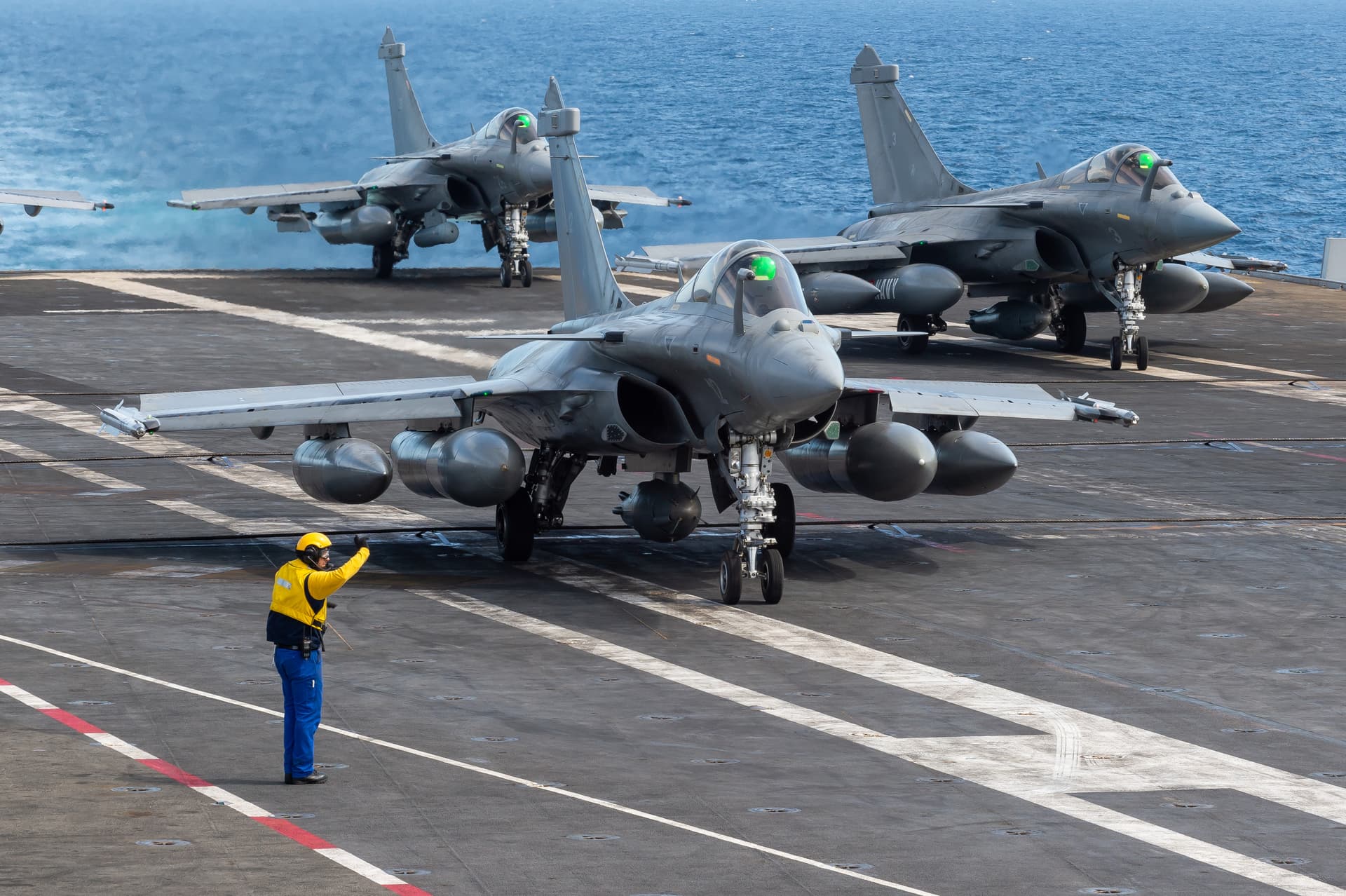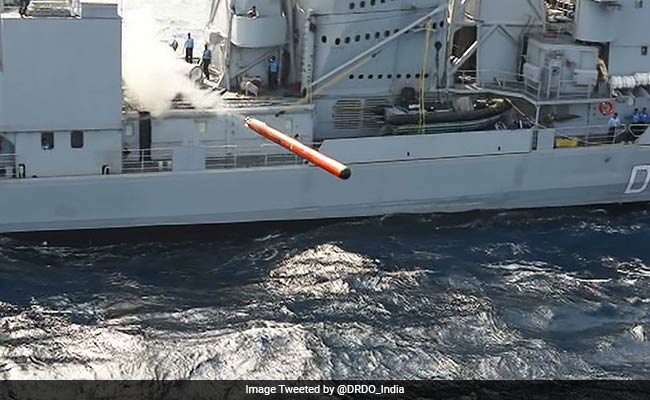SOURCE: AFI


A striking illustration from Taiwan, depicting Lord Rama aiming an arrow at a Chinese dragon, has once again captured public attention after being discovered near the Chinese border. Initially published by a Taiwanese news portal in 2020, the cartoon went viral following the violent clashes between Indian and Chinese troops in the Galwan Valley, Ladakh, along the Line of Actual Control. The artwork, captioned with the bold assertion “We Conquer, We Kill,” symbolizes a narrative of resistance and defiance.
On June 15, 2020, a skirmish led to the death of 20 Indian soldiers. While China did not officially disclose its casualty figures, U.S. intelligence estimated that 35 Chinese soldiers perished in the confrontation. This clash was one of the deadliest in decades along the India-China border.
Continue readingSOURCE: RAUNAK KUNDE / NEWS BEAT / IDRW.ORG


In a significant development for India-France defense relations, Indian Prime Minister Narendra Modi is poised to finalize the purchase of 26 Rafale M jets during his anticipated visit to Paris in February. The visit coincides with the AI Action Summit, hosted by French President Emmanuel Macron, which aims to harness artificial intelligence for global progress.
Last month, India’s Ministry of Defence gave the green light to acquire these 26 Rafale-M fighter jets alongside three additional Scorpène-class submarines from France. The Rafale-M deal, a government-to-government transaction, includes 22 single-seat jets and 4 twin-seat trainers, along with comprehensive support packages such as equipment, weapons, simulators, spare parts, crew training, and logistical support.
Continue readingSOURCE: RAUNAK KUNDE / NEWS BEAT / IDRW.ORG


In a significant move to bolster its diminishing combat strength, the Indian Air Force (IAF) and the Ministry of Defence (MoD) have agreed to establish a committee tasked with expediting the procurement of fighter jets, focusing particularly on the long-stalled Multi-Role Fighter Aircraft (MRFA) tender. According to sources from idrw.org, a major decision on this front might be reached by May 2025, driven by the urgency to prevent the IAF’s squadron strength from falling to a critical low of 28, which would be just 3-4 squadrons more than the Pakistan Air Force (PAF) by the year’s end.
The MRFA tender, which has been languishing since 2019, aims to procure 110 advanced fighter jets. However, the committee’s mandate does not extend to reviewing the progress of existing indigenous fighter jet programs like the Tejas or the Advanced Medium Combat Aircraft (AMCA). Instead, it’s primarily focused on strategies to swiftly increase the number of operational squadrons.
Continue readingSOURCE: RAUNAK KUNDE / NEWS BEAT / IDRW.ORG


In a significant boost to its artillery capabilities, the Indian Army is set to receive the first batches of the Guided Pinaka multi-barrel rocket launcher (MBRL) system later in 2025. This development follows the successful completion of flight tests conducted by the Defence Research and Development Organisation (DRDO) in November 2024, which were aimed at validating the system against the Provisional Staff Qualitative Requirements (PSQR).
On November 14, 2024, DRDO announced that the flight tests of the Guided Pinaka were completed in three distinct phases across various field firing ranges, marking a crucial milestone in the system’s development. These trials not only confirmed the rocket’s enhanced range, extending it to over 75 kilometers, but also validated its accuracy, consistency, and rate of fire for engaging multiple targets in salvo mode.
Continue readingSOURCE: AFI


The Defence Research and Development Organisation (DRDO) of India is on the cusp of a significant advancement in unmanned aerial warfare, with plans to soon conduct trials for the third iteration of the Unmanned Launched Precision Guided Missile (ULPGM V3). This latest variant promises enhanced capabilities over its predecessors, marking another step in India’s journey towards self-reliance in defence technology.
The ULPGM V3 represents a substantial upgrade from the earlier models, boasting improvements in range, precision, and adaptability. The development of the ULPGM V3 has seen collaboration between DRDO and Adani Defence, with the latter taking on the manufacturing responsibilities. This partnership aligns with India’s push for private sector involvement in defence production under the “Make in India” initiative.
Continue readingSOURCE: AFI


In a bold move that signals the future of air combat, Russia is making significant strides in the development of its sixth-generation fighter aircraft, with the Sukhoi Design Bureau at the forefront of this ambitious project. The head of Sukhoi’s Design Bureau recently shared key details about the next-generation fighter, emphasizing the aircraft’s need for a cutting-edge power plant that features significantly improved characteristics. This includes very low specific fuel consumption and high thrust, which are essential for meeting the demands of future aerial warfare.
The development of sixth-generation fighter jets is poised to revolutionize air combat, representing the next leap in military aviation after the fifth-generation fighters like the F-35 and Su-57. These future fighters will need to integrate advanced technologies and capabilities that surpass current aircraft, including stealth, autonomous systems, hypersonic speeds, advanced artificial intelligence (AI), and a networked approach to combat.
Continue readingSOURCE: AFI


In a significant stride towards enhancing India’s naval capabilities, the Defence Research and Development Organisation (DRDO) has developed the Electronic Heavy Weight Torpedo (EHWT), a cutting-edge weapon system designed to bolster the Indian Navy’s underwater combat prowess. This development marks a pivotal moment in India’s defense autonomy, aligning with the national vision of ‘Aatmanirbhar Bharat’ or self-reliant India.
The EHWT is an advanced, submarine-launched anti-submarine warfare (ASW) torpedo. It is an evolution of the previously inducted Varunastra torpedo, tailored specifically for submarine deployment. This torpedo is designed to engage quiet submarines effectively in both shallow and deep waters, showcasing a blend of high precision and significant range capabilities.
Continue readingSOURCE: IDRW.ORG

As anticipation builds around the announcement of the winner for India’s Project-75I submarine tender, the program might soon face legal hurdles due to non-compliance with the Air Independent Propulsion (AIP) system standards specified in the Request for Proposal (RFP) by the Indian Navy.
The tender pits Germany’s ThyssenKrupp Marine Systems (TKMS) with its U-214NG submarine against Spain’s Navantia, which offers the S-80 class. Both contenders have showcased their AIP systems but in ways that have raised questions about adherence to the Navy’s technical requirements.
Continue readingSOURCE: IDRW.ORG


In a move to enhance its operational capabilities in desert and semi-desert environments, the Indian Army has issued a Request for Proposal (RFP) for the procurement of 10,276 Multi-Spectral Camouflage Nets (MSCN). This procurement is aimed at equipping critical military assets like tanks and radars with state-of-the-art camouflage technology to evade enemy detection across multiple electromagnetic (EM) spectrum ranges.
The MSCNs are specifically intended to provide multi-spectral concealment for critical military assets when operating in hostile environments. These nets are designed to safeguard equipment by minimizing their detectability from enemy surveillance systems, ensuring a tactical advantage in both offensive and defensive operations.
Continue readingSOURCE: AFI

Amidst global trends towards sixth-generation combat aircraft, the Aeronautical Development Agency (ADA) team behind the Tejas MkII program has robustly defended the continued development of this 4.5+ generation platform. Critics questioning the relevance of the Tejas MkII in an era eyeing future technologies have met with a well-structured argument from the ADA, emphasizing strategic foresight and technological continuity.
The Tejas MkII, or LCA Mk2, is not merely another fighter jet but a crucial stepping stone in the evolution of India’s indigenous aircraft design. It builds upon the lessons and technologies developed during the LCA Mk1 program, offering a platform to refine and innovate before leaping into more advanced systems.
Continue readingSOURCE: AFI


In a strategic move to safeguard its burgeoning space assets, Pakistan has reportedly initiated discussions with China to acquire Anti-Satellite (ASAT) missiles. This development comes in the wake of India’s successful ASAT test, known as Mission Shakti, which demonstrated India’s capability to neutralize satellites in low Earth orbit, thereby posing a potential threat to Pakistan’s space infrastructure.
Pakistan’s space program, while not as extensive as India’s or China’s, has been making steady progress, focusing on both civilian and military applications. Satellites are becoming central to Pakistan’s strategic operations, including communication, reconnaissance, and navigation. The country currently operates several satellites, with the most notable being the PakSat-1R for telecommunications and the PRSS-1 (Pakistan Remote Sensing Satellite) for earth observation, which are crucial for both civilian and defense sectors.
Continue readingSOURCE: AFI


India’s decision to withdraw from the Fifth Generation Fighter Aircraft (FGFA) program with Russia has often been attributed to concerns over the aircraft’s technical shortcomings, including its limited stealth capabilities. However, the financial burden of the project appears to have been the decisive factor in India’s pullout.
The FGFA program, based on Russia’s PAK-FA or Sukhoi T-50 platform, was initially envisioned as a joint venture with a 50:50 design and work-share agreement. This collaboration promised India a stake in the development of a cutting-edge stealth fighter. However, as the program progressed, India’s participation became increasingly limited, with Russia retaining much of the design and development work.
Continue readingSOURCE: AFI


The Ministry of Defence (MoD) in India has embarked on three ambitious projects aimed at enhancing the operational capabilities of its armed forces through the integration of surveillance radars and sensors. These initiatives are designed to provide real-time, actionable intelligence for both offensive and defensive military operations across the Indian Air Force (IAF), Army, and Navy.
For the IAF, the focus is on creating a comprehensive ‘composite picture’ of the airspace through the integration of all national air surveillance radars. This integration will occur within the framework of the Integrated Air Command and Control System (IACCS). The IACCS is not just a collection of hardware but an advanced software platform that automates the command and control processes essential for air operations.
Continue readingSOURCE: AFI


From December 19 to 22, 2024, Hanoi hosted the Vietnam International Defence Expo, where Indian defense enterprises made a significant impact. Bharat Electronics Limited (BEL), Hindustan Aeronautics Limited (HAL), Bharat Dynamics Limited (BDL), Mazagon Dock Shipbuilders Limited (MDL), Defence Research and Development Organisation (DRDO), Larsen & Toubro (L&T), Neo Power, BrahMos Aerospace, and Runflat Tyre Systems were among the key participants, drawing considerable attention and fostering discussions on future Indo-Vietnamese defense collaborations.
Continue readingSOURCE: RAUNAK KUNDE / NEWS BEAT / IDRW.ORG


Larsen & Toubro (L&T), in collaboration with the Defence Research and Development Organisation (DRDO), has begun manufacturing the second prototype of the Zorawar Light Tank, marking a significant stride in India’s indigenous defense capabilities. This development comes as the Indian Army gears up to conduct extensive trials on the first prototype of this new light tank, designed specifically for high-altitude warfare.
The second prototype’s manufacturing signifies an acceleration in the development process, providing the army with an opportunity to compare and refine the tank’s design based on feedback from the ongoing trials. The Indian Army has expressed intentions to induct up to 354 units of this tank, highlighting its strategic importance in modernizing the country’s armored forces for operations in rugged and high-altitude areas where traditional heavy tanks struggle.
Continue reading